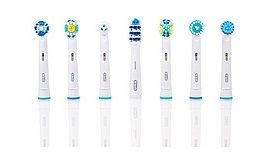The Lifespan of Dental Bridges: A Journey Through Time and Teeth
Ah, dental bridges—the architectural marvels of the dental world. These crafty constructs not only fill the void where teeth once stood but also restore your smile’s glory and functionality. However, much like the bridges we drive over, dental bridges come with a “best before” date. So, how long can you expect your dental bridge to last before it needs a little renovation or, in some cases, a complete rebuild? Let’s dive into the nitty-gritty of dental bridge longevity, shall we?
Understanding Dental Bridges: A Quick Refresher
Before we delve into the lifespan of dental bridges, let’s quickly review what they are. A dental bridge, in its essence, is a false tooth (or teeth) known as a pontic, which is anchored on either side by crowns. These crowns are placed on the natural teeth or implants next to the space that needs filling. Bridges can be made from various materials, including porcelain (to blend in with your natural tooth color), gold, and alloys.
The Lifespan of a Dental Bridge: What to Expect
On average, a dental bridge can last anywhere from 5 to 15 years, and sometimes even longer with proper care and maintenance. However, this range isn’t set in stone. Several factors can influence the longevity of your dental bridge, including:
- Material: The type of material used can affect how long the bridge lasts. Porcelain fused to metal (PFM) bridges, for example, offer a good mix of durability and aesthetics.
- Oral Hygiene: This is perhaps the most critical factor. Good oral hygiene practices can significantly extend the life of a dental bridge.
- Location in the Mouth: Bridges that replace molars tend to undergo more stress due to chewing, which can shorten their lifespan.
- Dental Habits: Grinding or clenching your teeth (bruxism), chewing ice, or using your teeth as tools can jeopardize the integrity of your bridge.
Maximizing the Mileage on Your Dental Bridge
Want to get the most out of your dental investment? Here are some tips to ensure your bridge stands the test of time:
- Brush and Floss Regularly: Just because it’s not a real tooth doesn’t mean you can skimp on cleaning. Use a soft-bristled brush and make flossing around the bridge a part of your daily routine. Special flosses and brushes are designed to clean around and under the bridge.
- Regular Dental Checkups: Your dentist isn’t just there to admire your smile. Regular checkups and cleanings are crucial for catching potential issues early and keeping your bridge in top shape.
- Eat Wisely: While bridges restore your ability to eat normally, it’s wise to avoid hard and sticky foods that can damage the bridge or dislodge it.
- Avoid Bad Habits: Nail-biting, pencil-chewing, and using your teeth as an opener are no-nos. These habits can damage your bridge and your natural teeth.
When the Bridge Comes to the End of Its Road
Despite your best efforts, there may come a time when your bridge needs to be replaced. Signs that it’s time for a new bridge include noticeable wear, damage to the bridge or surrounding teeth, or changes in your bite. If you experience discomfort or see visible signs of wear, it’s time to consult your dentist.
Closing Thoughts
In the grand scheme of things, dental bridges are a testament to modern dentistry’s ability to restore smiles and functionality. With the right care, these dental marvels can accompany you on many of life’s journeys, from the mundane to the extraordinary. Remember, the longevity of your dental bridge isn’t just about the numbers; it’s about how well you take care of it and yourself. So, brush, floss, visit your dentist, and here’s to many years of smiling confidently with your dental bridge!
